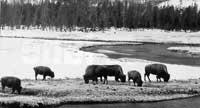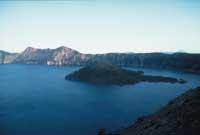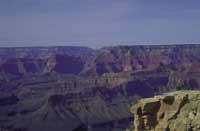Yellowstone and Yosemite, the world's first National Parks
1999/02/01 Altonaga, Kepa - EHUko biologia irakaslea Iturria: Elhuyar aldizkaria
Seeking the new identity
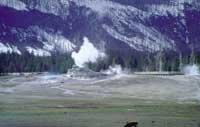
With the implementation of the first national parks in the United States, environmental protection was probably the least important goal of condoms. The initial engine for the concept of national park, without the protection of the environment, was the desire of the fragile traditions of remote times, of a terrible pretension, or better, of its survival. After independence, Americans suffered for decades a lack of cultural success. In fact, the origin of the main European states was rooted in antiquity, so the European states became owners of an extensive and rich artistic and literary heritage, unlike the United States.
Somehow, the lack of memories of the past left American intellectuals orphans, that is, their landscapes were castles and/or the cities of the cathedral without canonical cultural personality. And to respond to the eleven incisions of the Old World around such shortcomings, American thinkers chose the wonderful lands of the Far West, West West, West West West, as a substitute for man's footprints. That is, the age of this surprising landscape was the symbol of the sustainability and stability of the new created state, since there was no cultural achievement of the past.
Faith in nature began with independence, the 18th century. At the end of the 20th century, we want to somehow claim national greatness. Freed from Britain, ties with European culture were also broken as an undesirable consequence of political independence, and since then the United States could not claim the achievements of Western civilization as members of the British Empire. They could not ignore, for example, the statements populated in 1820 by the English cleric Sydney Smith: "In the four cantons of the world, who reads an American book? or who goes to an American work? or who looks at an American painting or statue?"
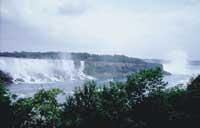
Faced with this troubling inability, American nationalists strove to convince them of their future and prosperity. However, doubt was not eliminated, especially when thinkers remembered whether American culture could survive Europe. And being negligible the works of their artists and writers, the nationalists resorted to nature in search of a single viable alternative.
For example, already in 1784 Thomas Jefferson, author of the United States Declaration of Independence and later president (1801-09), in addition to paleontologist, chose numerous areas of the American landscape, believing that these areas were perfect for future national achievements; he was proud of some corners of the state of Virginia, such as the gorge of the Potomac River.
But not even the bravest nationalists were blinded enough not to sense obvious distortions. And all the charm of the Potomac River could hardly forget the values of Rhin or Danube. Unfortunately for American nationalists, as it seemed that nature did not allow a clear separation between Europe and the United States. Of course, this did not calm the discomfort of those struggling to unite the American landscape with cultural and spiritual values.
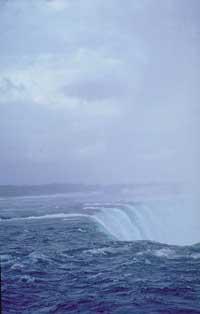
Later, around 1850, the writer James Fenimore Cooper (The Last of the Mohicans, 1826) recognized the hegemony of the European landscape, especially for his "imprint of the past". As can be seen in Cooper's writings, the use of nature as the basis of cultural identity was not too successful. Despite the retolica until then, the American intellectuals themselves were not very convinced of the extraordinary knowledge that the American places deserved. And unrelated to the past, the landscape stood to some extent the cultural scarcity of the nation.
Against the will was all geographic time. In fact, XIX. Until the mid-twentieth century the United States had a third of the current surface and, except for Mount Appalache and the waterfall to Niagara, they had nothing of the most pointer. Thus, before 1850, the Americans claimed the spectacularity of the leaps to Niaga, and many Europeans recognized that there was no parallel in the Old World. Niagara was very popular in Europe. For example, Pio Baroja himself, especially in his novel La veleta de Gastizar, located in Uztaritz in 1830, describes one of his sales; for the most striking ornament of this accommodation was, as he says, the role of the walls of the dining room, represented in the natural waterfall of Niagara.
But things changed substantially with the expansion to the west. Between 1846 and 1848, the United States appropriated the most wonderful lands on the continent, including the Rocky Mountains and the Pacific Slope, thus resolving the dilemma of cultural nationalists. In the Far West, in the Far West, there was no representative architecture or any other art, but this did not shape cultural nationalists, as it did in the East. Of course, the safety of the Far West could be easily forgiven, forgetting the corners of the world unparalleled.
And, of course, when the call for cultural identity through nature was added to the margins of the Far West, the orchard was sufficiently fertilized for the idea of the national park.
Western Cathedrals

In the Far West there was not only the opportunity to contemplate a nature without destroying, but to preside over it without touching. The spectacular natural areas of the East, such as the Niagara waterfalls, were unfortunately in the hands of private property long ago and suffered all kinds of abuses in search of an immediate benefit. In the far west, however, the owner was still a federal government, and in that sense cultural nationalism had to prove its honesty. The question materialized in some way when in 1851 and 1852 Yosemite Valley and Sierra Redwoods were wonderful natural spaces.
With the study of these natural spaces a new trust was achieved in the United States, since there was no other wonderful corner at this level. Moreover, the consolation brought by the gigantic sequoias of Sierra Redwoods came to cover the lack of a long American past, at least in the brains: The antiquity of the United States had to be prior to the European one, since "the sequoias began to grow before the Christian era" and, in fact, "the trees were already of a certain size by the time Solomon ordered the building of the temple of Jerusalem".
Although the references we have brought seem insignificant from the current point of view, in the context in which we find ourselves, an important intellectual need was met. In fact, it was the first time in nearly a hundred years, when Americans could confidently argue that they served to offer the culture of the world what and what. Although European castles, cathedrals, abatellae and other castles could never have been eclipsed, the United States had "earth monuments" and gigantic forests, so these wonderful natural spaces compensated for the lack of old cities, the scarcity of aristocratic traditions and the memories of all the achievements of the Old World.
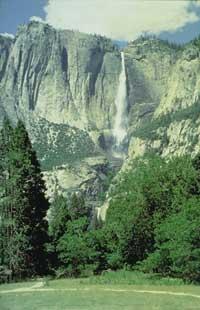
That is, as we are seeing, in the pretension of departure of the national parks was monumentalism, that is, the objective of keeping the "most ejjinados corners" under conviction. However, being worthy of protection not only the admirable corners, but also the wild animals, the enthusiasts of the national parks were not approved until very late, until the twentieth century was quite advanced, since the Everglades National Park of Florida, approved in 1934, was the first to materialize with this type of conservation responsibility, being named in 1947.
The topography of Florida's Everglades National Park is not monumental. For the first time a park has no vertiginous mountains, no deep canyons, no aromatic waterfalls, but a monotonous and boring herb marsh in which the alligator is the best-known population. However, the protection of native plants and animals was the main reason for the park's justification.
On the path of monumentalism, however, it was a step forward to move from landscape goodness to landscape presertion, in which Yoseme-Sierra Redwoods had special importance. In fact, it seemed that both had been fortuned to move on to private owners. And that was a big dilemma. If private exploiters were left free to kidnap Yosemite Valley and Sierra Redwoods, any cultural symbolism based on those natural spaces could become immediate. In fact, by then the Niagara Falls had shown to what extent it was a nonsense, to seek the cultural refuge of the nation in natural spaces sacrificed for individual performance, although its uniqueness was indisputable. Therefore, the United States once again has a wasted opportunity in Niagara.
The crystallization of cultural concern occurred in the idea of the national park in the winter of 1864. Encouraged by the affairs of Yosemite Valley and Sierra Redwoods, a small group of Californians wished one of their senators to propose legislation to protect the two wonderful corners of private abuse: natural spaces should be "for public use, leisure and recreation" and even "inalienable forever".
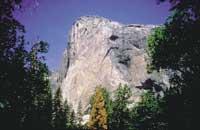
The objective of the National Park, which was intended to take effect, as clearly indicated by the limitations imposed, was totally scenic, embracing only the most spectacular corners. Only Yosemite Valley and nearby peaks, that is, forty square miles. And a similar reduction was applied to the south zone of the park, where only four square miles were considered. Obviously, the limits imposed are opposed to the ecological network of the territory, although it is true that the term "ecology" was still unknown. However, it is clear that monumentalism was the driving force for the 1864 Act at Yosemite Valley Park, and not any concern for the environment.
In fact, Yosemite was the first national park, although formally it was not; the legal nature of the national park would have come to him later, in 1890, when the state of California gave the federal government the Yosemite Valley and the giant trees. On the other hand, the national park was a totally cultural concept, since in those years you could not imagine the tourist potential of these natural spaces. That is, while tourism has not become a real possibility, national parks have played a cultural role.
Monumentalism over and over
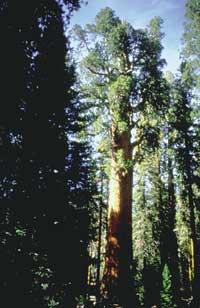
As we have seen, Yosemite was the place where the idea of the National Park was developed. However, the Yellowstone National Park of Wyoming always appears in all sources with the honor of the first national park in the world, in which the idea of the national park and the corresponding federal legal support was unified in 1872.
Regarding the size of Yosemite, Yellowstone was huge: More than 3,300 square miles, all under federal government jurisdiction from the beginning. But this breadth, in this case, had nothing to do with the conviction that the promoter of the park was convinced of the advantages of protecting the entire ecosystem. This enormous breadth derives from the responsibility of maintaining previously well-governed the wonderful natural monuments that have not yet been known, and not from the desire to stop the species. That is, geyser, waterfalls, canyons, etc. of that distant and beautiful corner of Wyoming had the appeal of a cultural treasure, but, in fact, there was not much specific information about this territory, only the stories of trapper and gold seekers. In this way, the label of the National Park was applied to the very wide enclosure, with the fear of leaving out something interesting. However, if there had been a better knowledge then of the environment, especially with the most spectacular natural phenomena together, in all probability Yellowstone would have been much smaller, very limited by the "most eyed corners", like Yosemite.
Thus, while the breadth of the world's first national park coincides with ideas about the size of the ideal park that is frequently used today, this similarity has been totally disinterested. In fact, America's future national parks will hardly be that big. In short, U.S. national parks are the result of monumentalism, with cultural nationalism as a starting point, and later conservationism could also be regarded as a side product of this monumentalism.
Niagara Falls
According to polls, Niagara Falls is the third in the list of American favorite natural spaces, behind Grand Canyon and Yellowstone. However, compared to the last two, Niagara waterfalls are "deeply programmed."
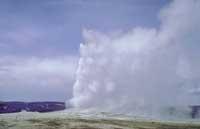
Due to electric power, a third of the flow is diverted to the turbines at noon and at night (photo below), with a minimum of visitors, three-quarters of the flow circulate to the turbines, avoiding water leaps:
"turn on" and "turn off" the falls somehow. However, the history of the abuses suffered by the Niagara Falls is long, and already in 1830, by the hand of cherpolaris, archers and speculators all kinds of injustices occurred. It should not be forgotten that in the 1840s 40,000 visitors approached a year.
The National Park of YosemiteThe current Yosemite National Park has an area of 3,080 km2. Yosemite Valley and the giant sequoias (the oldest in the eurostatic is 2,700 years old) are located in the southwest of the park. This area is, in fact, a valley configured 10,000 years ago by a glacier, in which you can see the most well-known corners of the park, such as the Yosemite Jump (740 m high) and the imposing granite monolith El Capitan, 900 m perpendicular wall of the lower image. |
Sequoia National Park
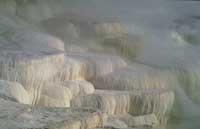
Sequoia National Park (1,628 km2) is located near Yosemite, south. Here is the immense sequoia known as General Sherman of the image, as it is often said to be the largest animated in the world: the trunk has a perimeter of 11.5 m at ground level (photo below) and a weight of 1.385 tons has been calculated.
The giant sequoias of the park belong to the species Sequoiadendrum giganteum, but the higher, though more slender, sequoias belong to the species Sequoia sempervirens, found in northern California, near the sea.
Yellowstone National ParkThe current Yellowstone National Park has 8,990 km2, that is, it is a little smaller than Navarre and is located in the center of the Rocky Mountains, where it has embraced between two hundred geises and endless geothermal phenomena. On the other hand, it is a refuge of living savages where the brown bear (such as Yogi and Boo-boo), the black bear, the bison, the uapiti deer, the moose, etc. live. |

Gai honi buruzko eduki gehiago
Elhuyarrek garatutako teknologia



